#red-and-black froghopper
Explore tagged Tumblr posts
Text
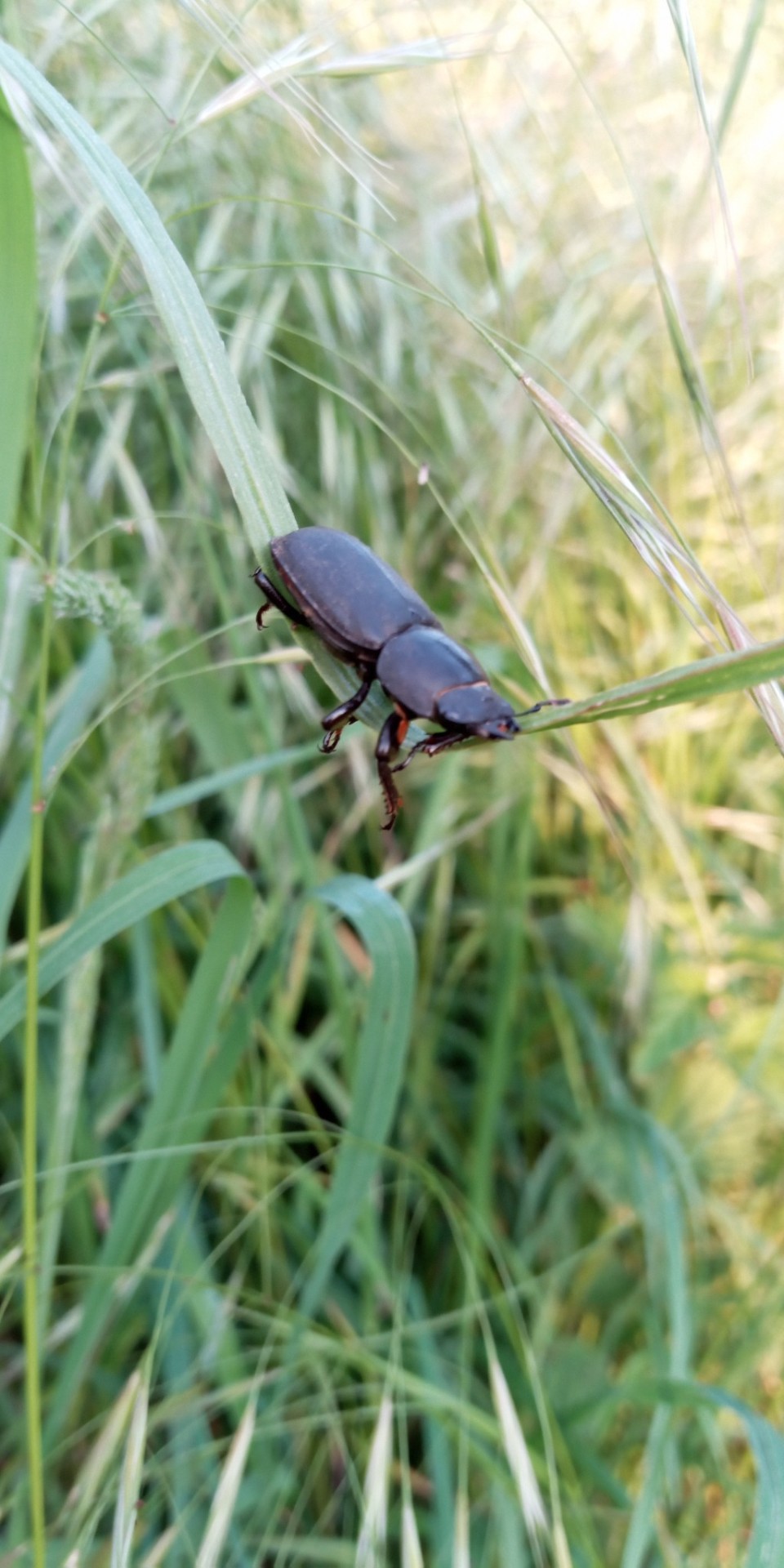
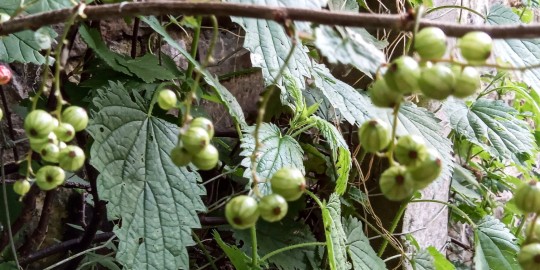
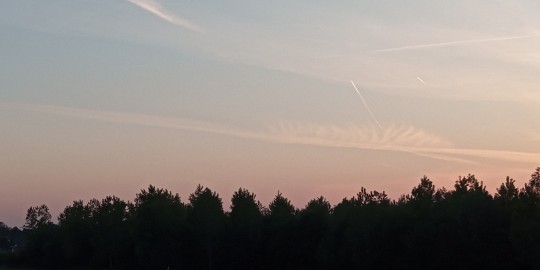
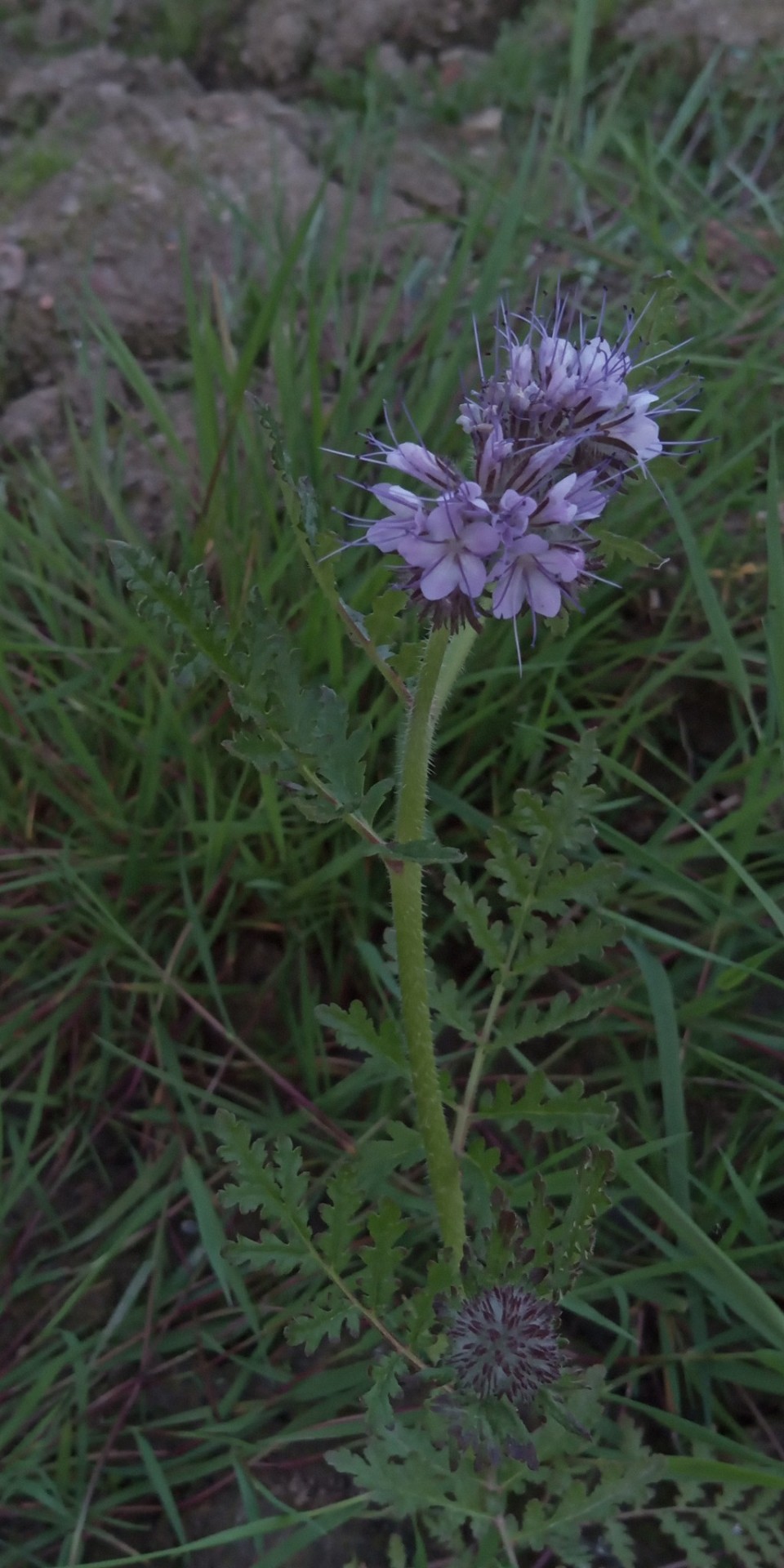
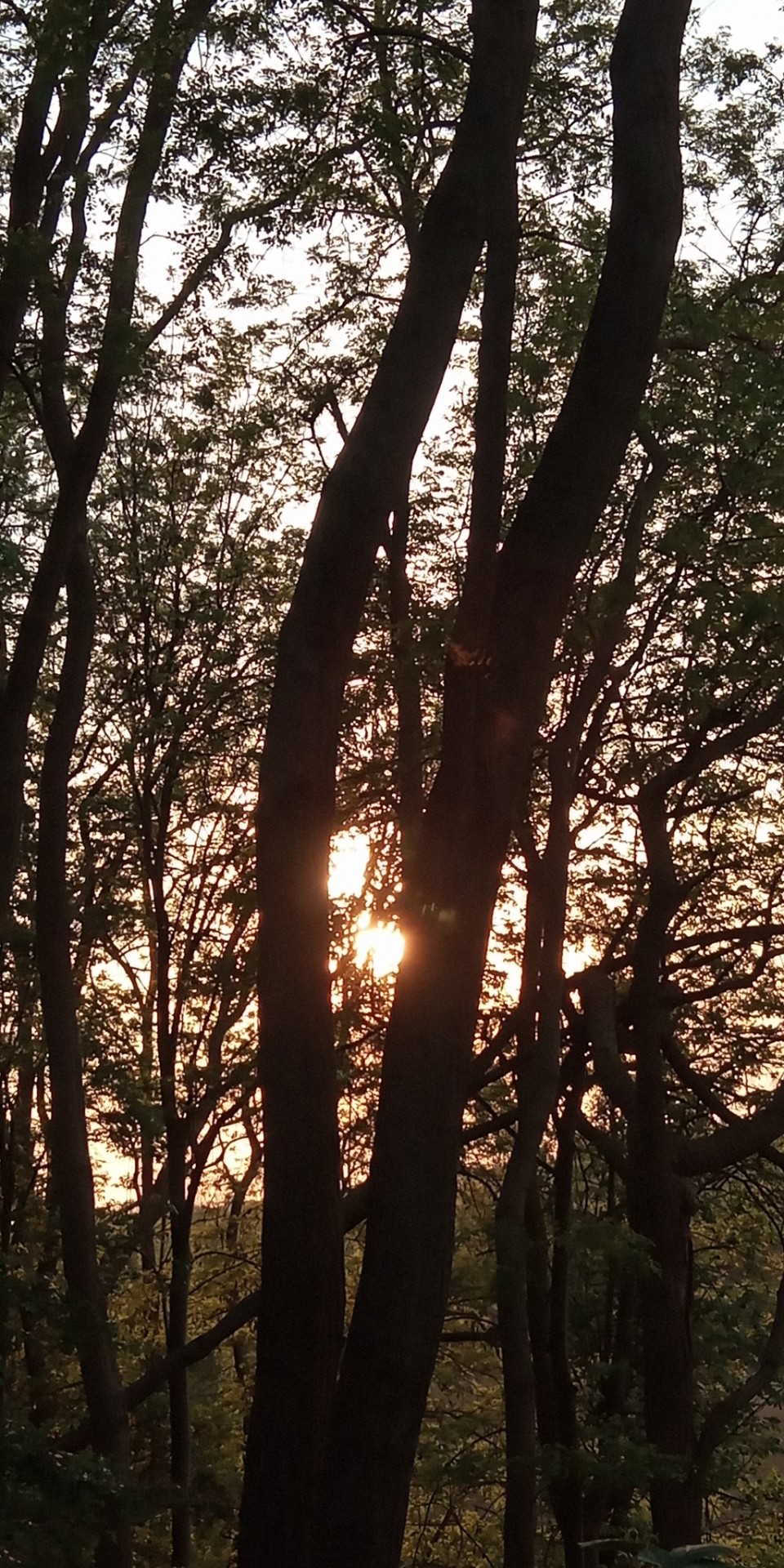
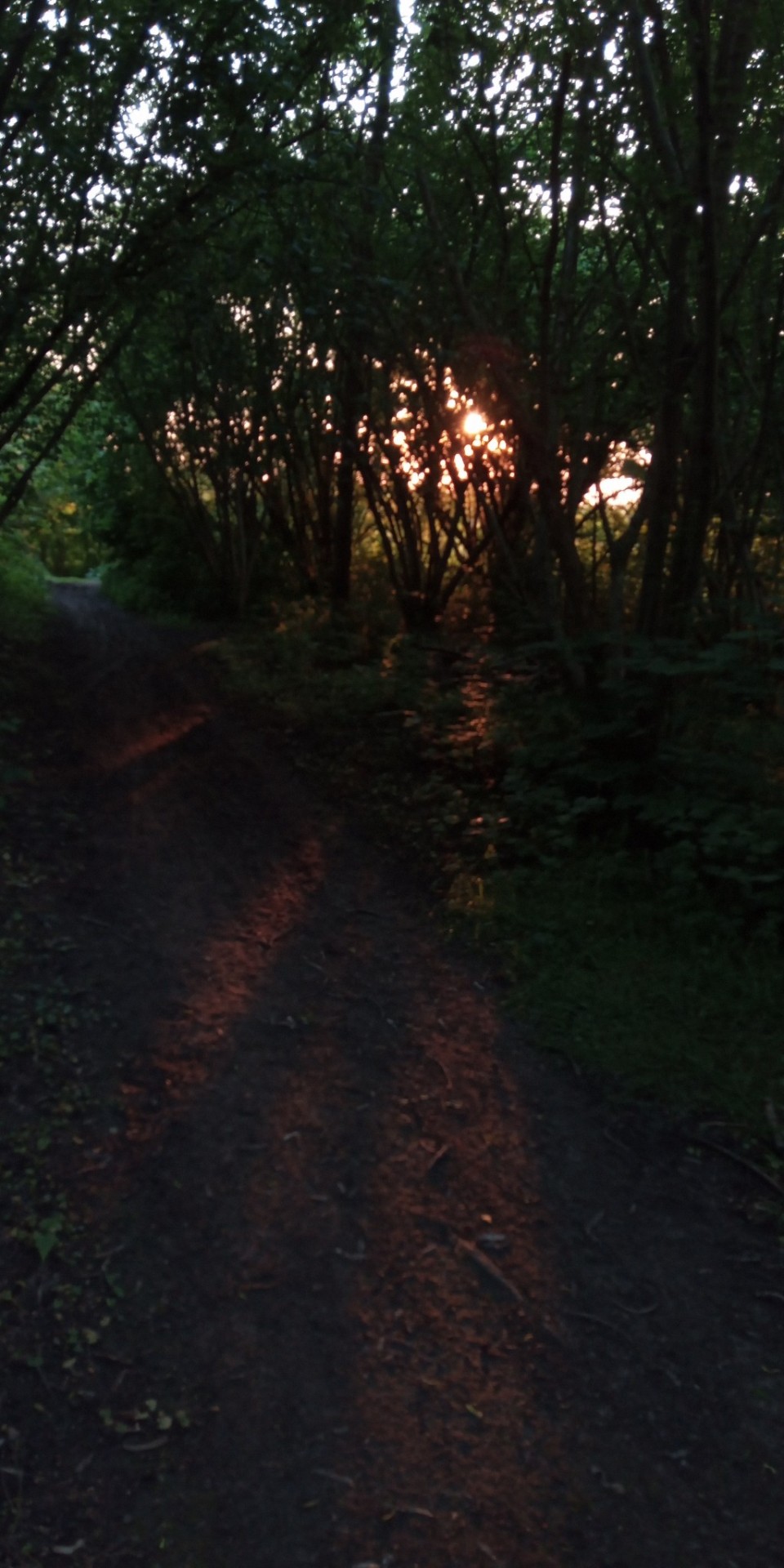
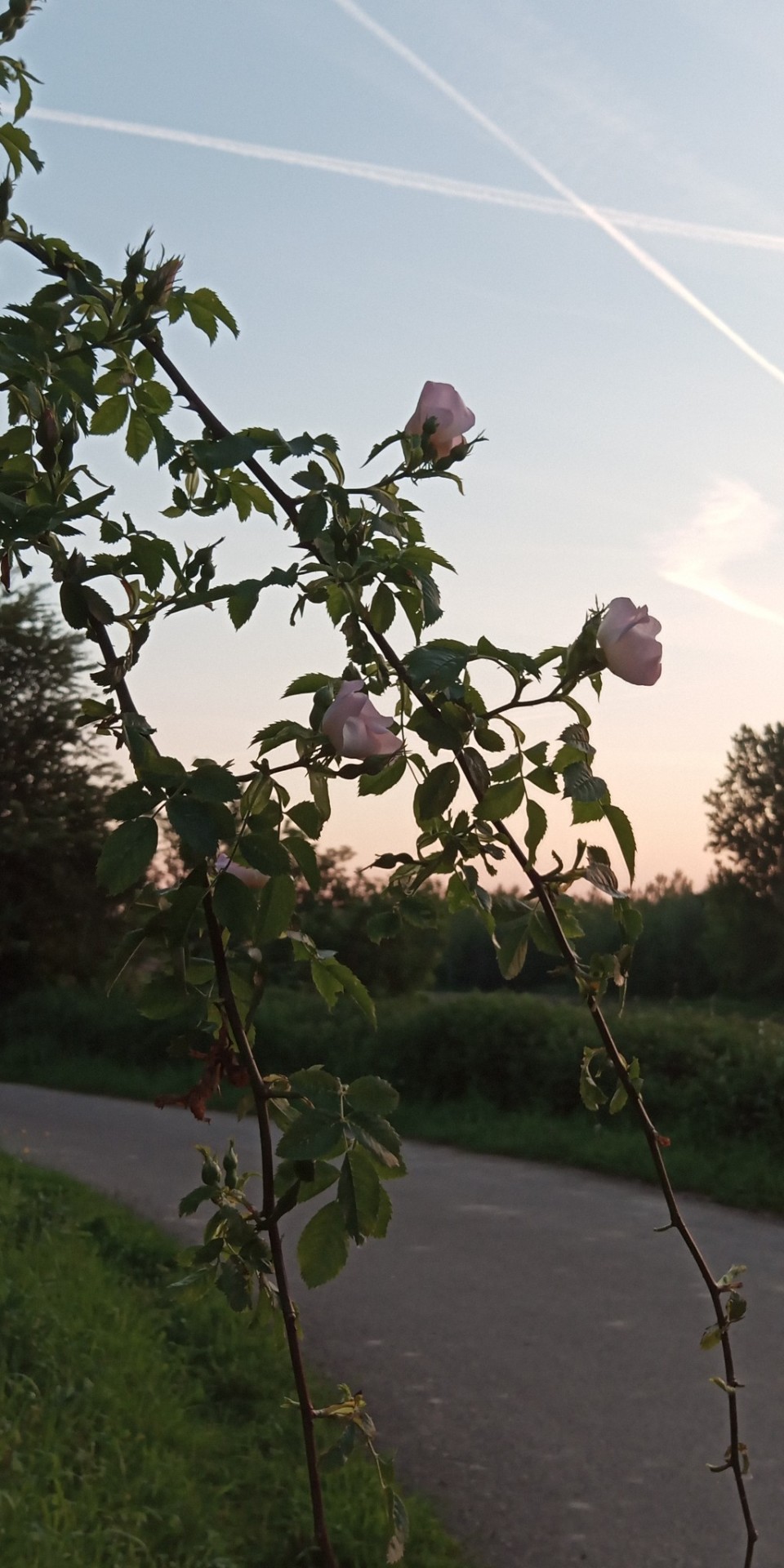
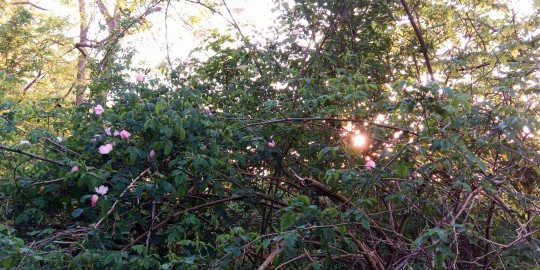
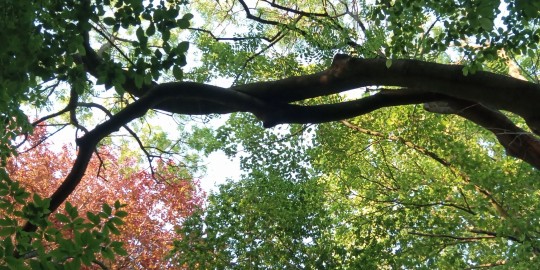
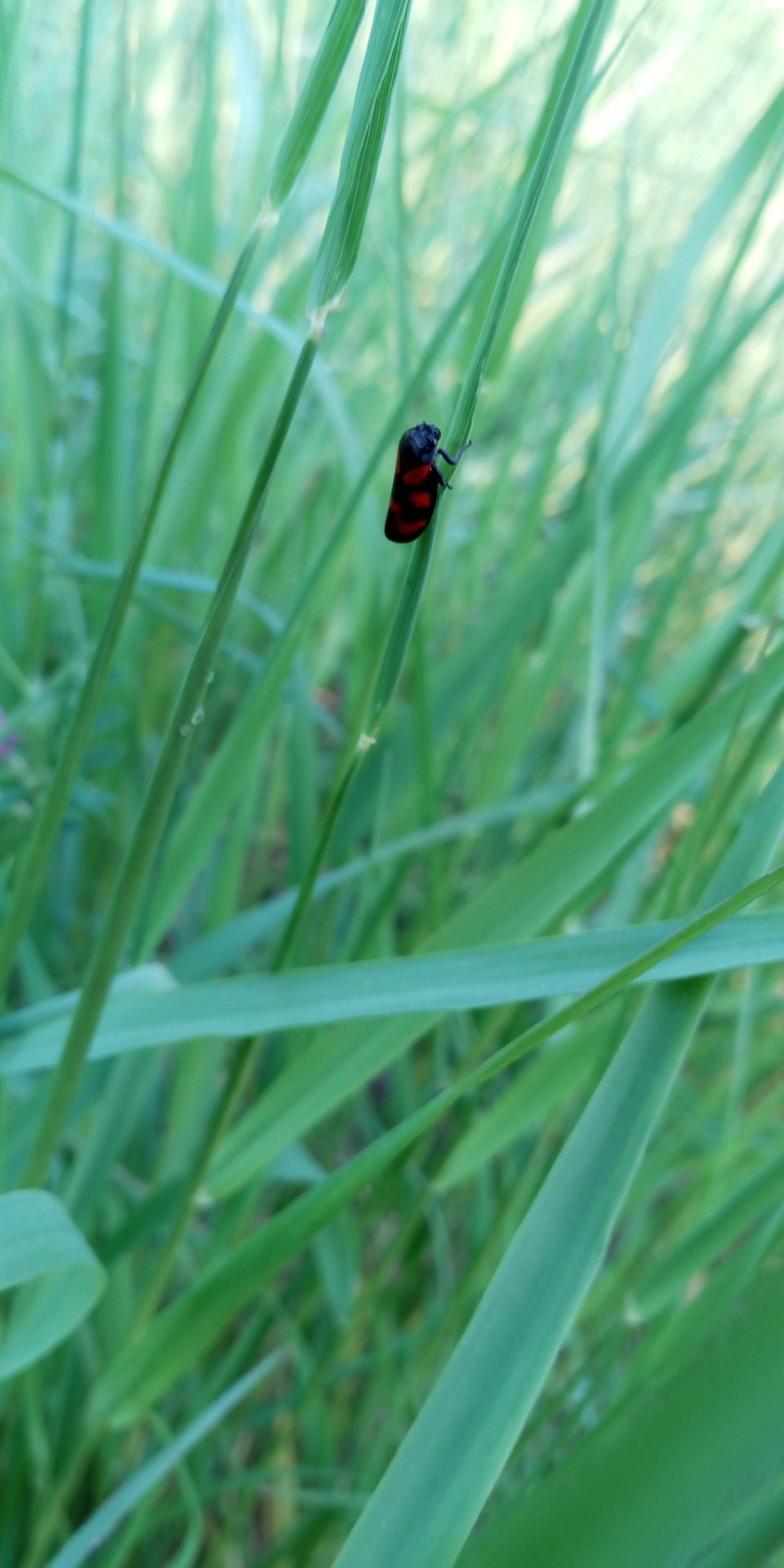
#my pictures#walk#may#seasonal#landscape photography#landscapes#plant photography#plant pictures#insects#red-and-black froghopper#lesser stag beetle#beetle#sunset#evening sky#sky photography#sky pictures#red currants#wildflowers#dogrose#sunlight#hey it's me posting pictures of plants again#of night and light and half light
7 notes
·
View notes
Text

Red-and-black Froghopper
A red-and-black froghopper sitting in a patch of sunlight, on a plant stem, in Glapthorn Cow Pastures.
#canon#canonuk#cercopis vulnerata#glapthorn#glapthorn cow pastures#insect#insects#invertebrate#invertebrates#minibeast#minibeasts#nature#nature reserve#northamptonshire#northants#outdoors#red-and-black froghopper#spring#springwatch#wildlife#wildlife trust#wildlife trusts#woodland#woods
0 notes
Text
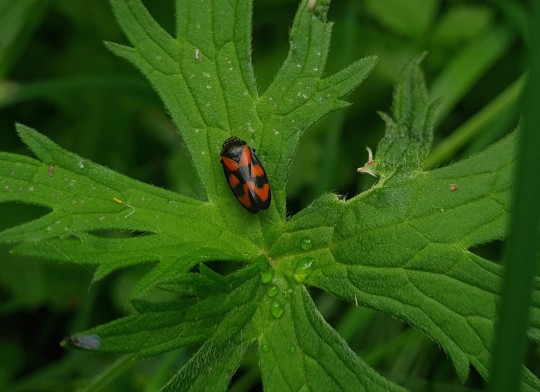
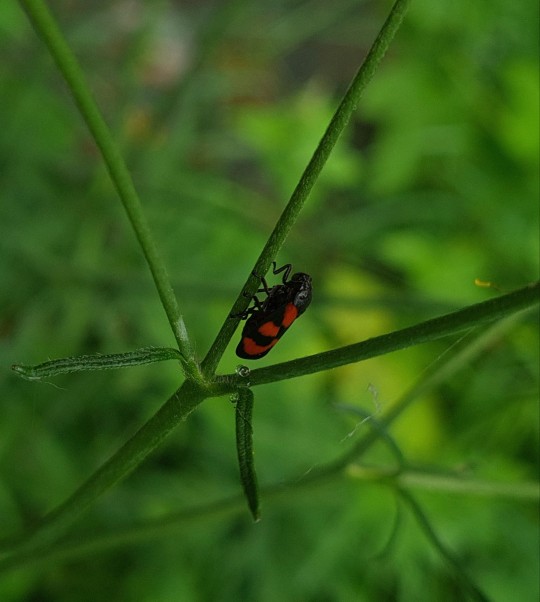
more bugs from my travels... two very fashionable red-and-black froghoppers
140 notes
·
View notes
Note
Are their other bugs with pupils like a Mantis?
Yep! This feature is often called the pseudopupil and it occurs, the way I understand it, when the ommatidia (the individual segments you can see that make up a compound eye) absorb light when viewed head-on while ones at other angles reflect the light.
Apart from mantises, this can be observed notably in insects like damselflies, froghoppers, and leafhoppers, among other species.


[Image Sources: ResearchGate, Marguerite A. Butler, and Photosynthesis-In-Nature | Image IDs: A set of figures showing the eyes of a red and black damselflies, followed by a greenish brown and black froghopper /End IDs.]
and it can also be observed in crustaceans like fiddler crabs and mantis shrimp.

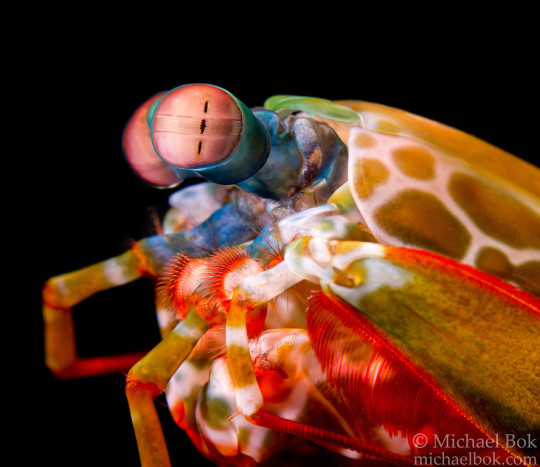
[Image Sources: fiddlercrab.info, Chris Lukhaup, and Michael Bok | Image IDs: A photo showing the blue eyes of a green, blue, and brown fiddler crab, followed by another photo of a multicolored mantis shrimp /End IDs.]
Yet more insects have a multitude of similarly dark spots as well rather than just one, including some wasps! You may hesitate to call this many spots "pupils" though.
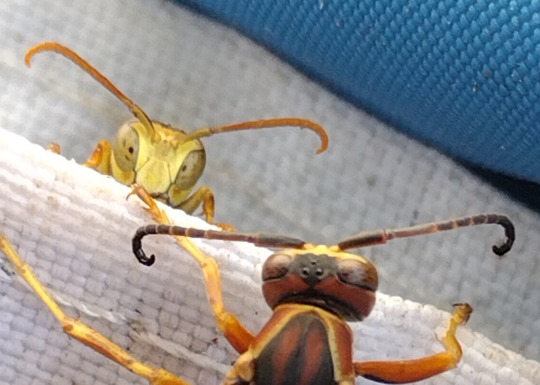

[Image Sources: Myself, ie jupiterswasphouse, and ALEPHROCCO | Image IDs: A photo of two male paper wasps looking at each other from opposite sides of the material of a folded canopy, followed by close-up photo of the face of a northern paper wasp /End IDs.]
28 notes
·
View notes
Text
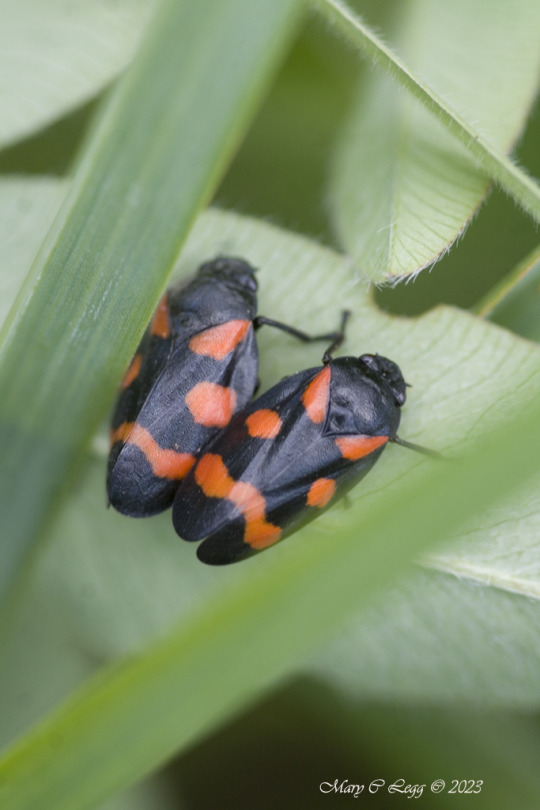
Red and Black Froghopper, Cercopis sanguinolenta Canon 400D EF 100 2.8 f /3.2 1/100 iso: 100 Milovice, Czech Republic 5/27/212
#hemiptera#bugs#hoppers#leafhoppers#insects#invertebrates#macro#grasslands#macrophotography#insectphotography#insect
4 notes
·
View notes
Text
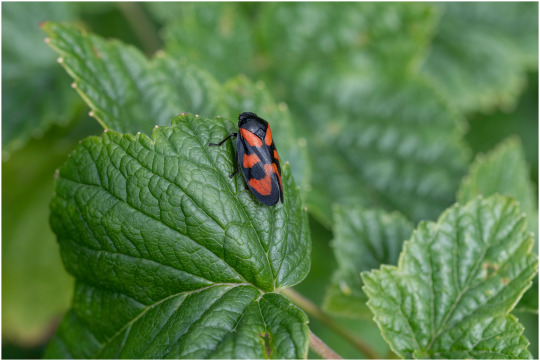
Blodcikade (Cercopis vulnerata)
Red-and-black Froghopper (Cercopis vulnerata)
#Blodcikade#Cercopis vulnerata#Cercopis#Red-and-black Froghopper#Cikade#Froghopper#Næbmund#Hemiptera#Cercopidea#Insekt#Insect#Topbjerg#Mark#Field#Sommer#Summer
2 notes
·
View notes
Photo
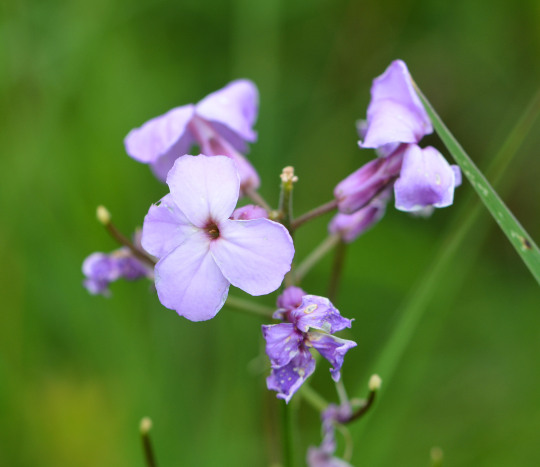
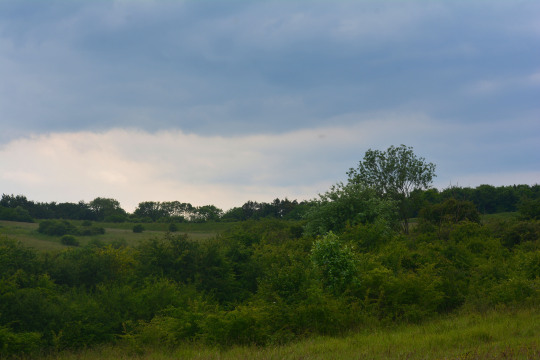
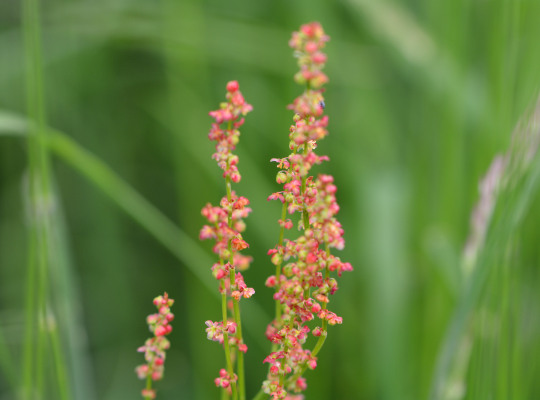
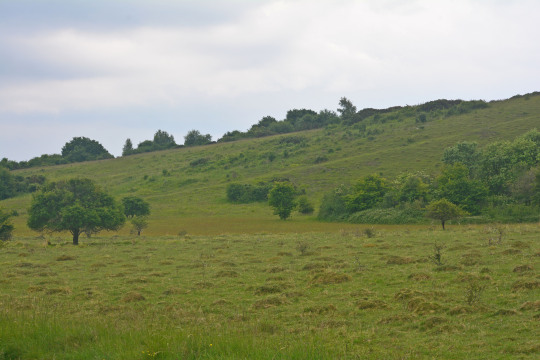
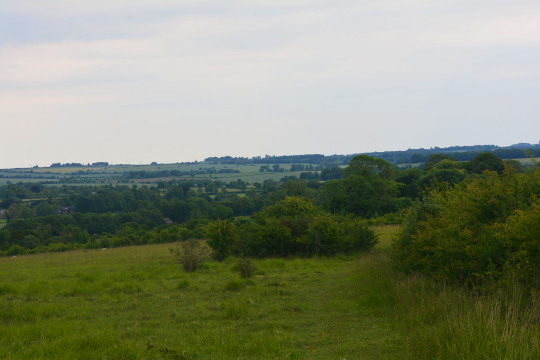
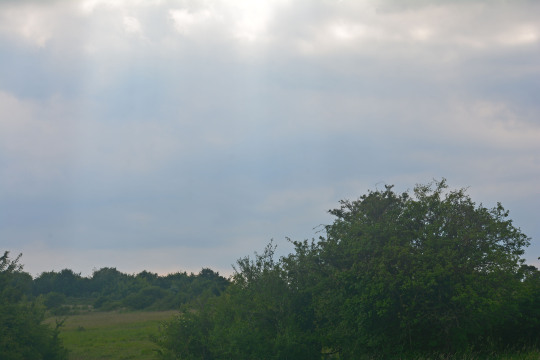
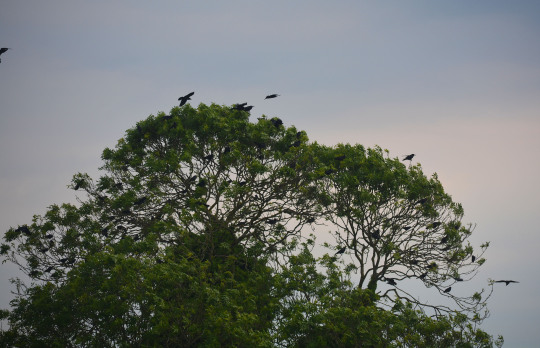
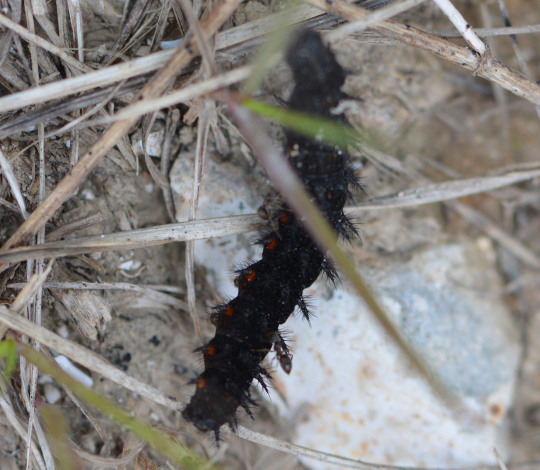
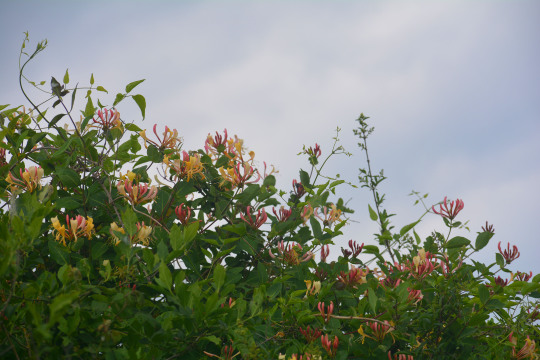
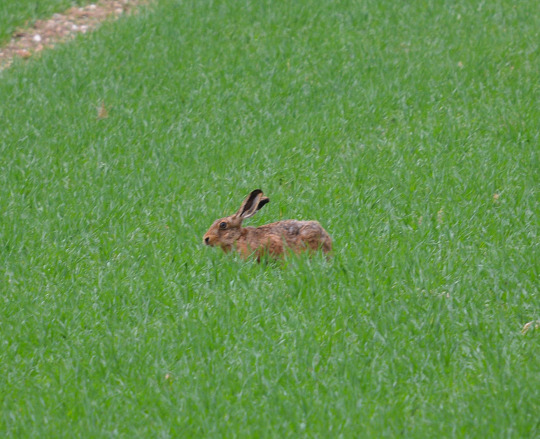
03/06/2022-Blog 2 of 2: Martin Down
We came here for the second bank holiday Friday running and it was nice to see the landscape looking so green with the grass so high and some interesting cloud formations on the walk. I took the second, fourth, fifth and sixth pictures in this photoset of views here today. It was a top walk of birds especially for warblers and especially along the hedgerow near the lower car park with great views of Whitethroat and Chiffchaff hearing the latter there well too, the species these bushes pleasingly teemed with included Chaffinch, Corn Bunting, Yellowhammer, Wren and many Woodpigeons too with Yellowhammer seen elsewhere on the walk too. I saw a very pretty female Blackcap with its nice nice brown head really well later in the walk. It was also great to see scores of Rooks all in and around one tree a key bird here which the seventh picture I took today in this photoset shows and a Red Kite flying over. There was a marvelous moment late on when walking the other way along the path a little way from the lower car park after a great walk round the reserve, when I heard and briefly saw an exotic Mediterranean Gull or two. A special inland sighting of this bird, not one I’ve seen at Martin Down before. I saw a Lesser Black-backed Gull just before not one I’ve seen here before either I don’t believe, you do find gulls in this sort of rural inland habitat especially near to landfill sites, it was just nice to see a variety of them today.
Small Blue butterflies made a nice sight in the world of insects, as did Five-spot Burnet moths, a nice black caterpillar which I took the eighth picture in this photose of and a couple of different types of beetle. I also very much enjoyed seeing a red-and-black froghopper. A type of insect I’ve heard of before as their larvae form cuckoo spit when sucking sap which I saw again today and have had my best year ever for noticing, so I really liked seeing an adult and I was so pleased to see such an attractive and colourful insect on a blade of grass a real highlight today.
It was brilliant to see loads of Hares at least eight looking over the neighbouring field after seeing the Mediterranean Gulls a place we often see Hares and we got a nice intimate view of one which I took the tenth picture in this photoset of. Special views of a mammal I am really excited by and admire and have had a good year for so far.
Pretty honeysuckle which I loved seeing today and took the ninth picture in this photoset of a lot it together at the top of a tree I did a macro closeup photo too, possible honesty and scabrous were floral highlights of the walk. I also enjoyed seeing kidney vetch, bird’s-foot trefoil, buttercup, possible common rock-rose, speedwell, dog rose, sorrel as shown in the third picture in this photoset, herb-Robert, nightshade, violet, plantain, nice lacey flowers I believe carrot, I believe elder, mignonette again here and dropwort in a great show of flowers today. A very fun packed day again today that it was so great to be out in.
Wildlife Sightings Summary: One of my favourite birds the Red Kite, one of my favourite moths the Five-spot Burnet, my first ever Red-and-Black Froghopper, Rook, Jackdaw, Magpie, Woodpigeon, I believe Grey Partridges quickly, Blue Tit, Corn Bunting, Yellowhammer, Whitethroat, Blackcap, Chiffchaff, Chaffinch, Wren, Mediterranean Gull, Black-headed Gull I believe too, Lesser Black-backed Gull, Speckled Wood, Small Blue, possible Meadow Brown, moths, caterpillar and the beetles.
#beetle#moth#caterpillar#butterfly#birds#small blue#speckled wood#red kite#five-spot burnet#red-and-black froghopper#rook#jackdaw#magpie#woodpigeon#blue tit#wren#mediterranean gull#black-headed gull#lesser black-backed gull#birdwatching#uk#photography#england#world#earth#nature#happy#martin down#dorset#hampshire
2 notes
·
View notes
Photo

The full book title contains 3777 words and reads as follows: 'The historical development of the Heart i.e. from its formation from Annelida: Clam worm, Seamouse, Lugworm, Megascolex, Tubifex, Pheretima, Freshwater leech, marine leech, land leech. Arthropoda: Ladybird, Krill, Rock Barnacle, Root-headed Barnacle, Copepod, Silverfish, Cairns birdwing, Silver - spotted skipper, Scutigera, Cray fish, Large white, Andonis blue, Camberwell beauty, Tiger swallowtail, Regent skipper, Black – veined white, Green – underside blue, Blue Morpho, Apollo, Guava skipper, Cleopatra, Large copper, Millipede, Orb spider, Black widow spider, Giant crab spider, Wolf spider, Bird – eating spider, Tenebrionid beetle, Green Tiger beetle, African goliath beetle, Scolopendra, Diving beetle, African ground beetle, New guinea weevil, Barnacle, Lobster, Shrimp, Woodlice, Mite, Prawn, Housefly, Butterfly, Monarch butterfly, Peacock butterfly, Honey bee, Fairy shrimp, Horsehoe crab, Tick, Bluebootle, Froghopper, Yellow crazy ant, Water flea, Sea spider, Fiddler crab, Shiny spider crab, Hermit crab, Sail swallowtail, Red admiral, Morpho butterfly, Desert locust, Stephens island weta, Speckled bush cricket, Mole cricket, Dung – beetle, Euthalia ynipardus, Small blues, Termite, Hornet, Mosquito, Garden spider, Tarantula, Desert hairy scorpion, Emperor dragon – fly, Moth, Centipede, Wood ant, Stag beetle, Indian red admiral, Blue admiral, Harvestman, Hoverfly, Shield bug, Assassin bug, Cicada, Coreid bug, Rose aphid, Water – boatman, Wasp, June bug, Large tortoiseshell, Frog beetle, Mexican red – legged tarantula, Paintedlady, Sydney funnelweb spider, Small tortoiseshell, Mountain bumble bee, Trapdoor spider, Jumping spider, Daddy longlegs spider, Orchind bee, Asian carpenter bee, Parasitic bee, House spider, Giant longhorn beetle, Flea, Bedbug Beetle, Cockroach, Scorpion, Spider, Ant, Gnats, Grasshopper, Silver fish, Crab, Great green bush cricket, Elephant hawk – moth. Mollusca: Neomenia, Chaetoderma, Chiton, Lepidopleurus, Apple snail, Sea hare, Sea lemon, Dentalium, Freshwater mussel, Marine mussel, Pearl oyster, Cuttlefish, Giant squid, Chambered fish, Devilfish. Fishes or Pisces: African glass catfish, African lungfish, Aholehole, Airbreathing catfish, Alaska blackfish, Albacore, Alewife, Alfonsino, Algae eater, Alligatorfish, Alligator gar, Amberjack - Seriola dumerili, American sole, Amur pike, Anchovy, Anemonefish, Angelfish, Angler, Angler catfish, Anglerfish, Antarctic cod, Antarctic icefish, Antenna codlet, Arapaima, Archerfish, Arctic char, Armored gurnard, Armored searobin, Armorhead, Armorhead catfish, Armoured catfish, Arowana, Arrowtooth eel, Asian carps, Asiatic glassfish, Atka mackerel, Atlantic Bonito (Sarda sarda), Atlantic cod, Atlantic herring, Atlantic salmon, Atlantic Sharpnose Shark - Rhizoprioltodon terraenovae, Atlantic saury, Atlantic silverside, Australasian salmon, Australian grayling, Australian herring, Australian lungfish, Australian prowfish, Ayu, Baikal oilfish, Bala shark, Ballan wrasse, Bamboo shark, Banded killifish, Bandfish, Banjo, Bangus, Banjo catfish, Bank Sea Bass, Barb, Barbel, Barbeled dragonfish, Barbeled houndshark, Barbel-less catfish, Barfish, Barracuda, Barracudina, Barramundi, Barred danio, Barreleye, Basking shark, Bass, Basslet, Batfish, Bat ray, Beachsalmon, Beaked salmon, Beaked sandfish, Beardfish, Beluga sturgeon, Bengal danio, Betta, Bichir, Bicolor goat fish, Bigeye, , Bighead carp, Bigmouth buffalo, Bigscale, Billfish, Bitterling, Black angelfish, Black bass, Black dragonfish, Blackchin, Blackfin Tuna - Thunnus atlanticus, Blackfish, Black neon tetra, Blacktip reef shark, Black mackerel, Black scalyfin, Black sea bass, Black scabbardfish, Black swallower, Black tetra, Black triggerfish, Bank Sea Bass aka Yellow Sea Bass - Centropristis ocyurus, Bleak, Blenny, Blind goby, Blind shark, Blobfish, Blueline Tilefish, Blowfish, Blue catfish, Blue danio, Blue-redstripe danio, Blueline Tilefish , Blue eye, Bluefin tuna, Bluefish, Bluegill, Blue gourami, Blue shark, Blue triggerfish, Blue whiting, Bluntnose knifefish, Bluntnose minnow, Boafish, Boarfish, Bobtail snipe eel, Bocaccio, Boga, Bombay duck, Bonefish, Bonito, Bonnetmouth, Bonytail chub, Bronze corydoras, Bonytongue, Bowfin, Boxfish, Bramble shark, Bream, Brill, Bristlemouth, Bristlenose catfish, Broadband dogfish, Brook lamprey, Brook trout, Brotula, Brown trout, Buffalo fish, Bullhead, Bullhead shark, Bull shark, Bull trout, Burbot, Bumblebee goby, Buri, Burma danio, Burrowing goby, Butterfish, Butterfly ray, Butterflyfish, California flyingfish, California halibut, Canary rockfish, Candiru, Candlefish, Capelin, Cardinalfish, Cardinal tetra, Carp, Carpetshark, Carpsucker, Catalufa, Catfish, Catla, Cat shark, Cavefish, Celebes rainbowfish, Central mudminnow, Chain pickerel, Channel bass, Channel catfish, Char, Cherry salmon, Chimaera, Chinook salmon, Cherubfish, Chub, Chubsucker, Chum salmon, Cichlid, Cisco, Climbing catfish, Climbing gourami, Climbing perch, Clingfish, Clownfish, Clown loach, Clown triggerfish, Cobbler, Cobia, Cod, Codlet, Codling, Coelacanth, Coffinfish, Coho salmon, Coley, Collared carpetshark, Collared dogfish, Colorado squawfish, Combfish, Combtail gourami, Common carp, Common tunny, Conger eel, Convict blenny, Convict cichlid, Cookie-cutter shark, Coolie loach, Cornetfish, Cowfish, Cownose ray, Cow shark, Crappie, Creek chub, Crestfish, Crevice kelpfish, Croaker, Crocodile icefish, Crocodile shark, Crucian carp, Cuckoo wrasse, Cusk, Cusk-eel, Cutlassfish, Cutthroat eel, Cutthroat trout, Dab, Dace, Desert pupfish, Devario, Devil ray, Dhufish, Discus, Diver: New Zealand sand diver or long-finned sand diver, Dogfish, Dogfish shark, Dogteeth tetra, Dojo loach, Dolly Varden trout, Dolphin fish - Corypaena hippurus, Dorab, Dorado, Dory, Dottyback, Dragonet, Dragonfish, Dragon goby, Driftfish, Driftwood catfish, Drum, Duckbill, Duckbill eel, Dusky grouper, Dusky Shark - Carcharhinus obscurus, Dwarf gourami, Dwarf loach, Eagle ray, Earthworm eel, Eel, Eel cod, Eel-goby, Eelpout, Eeltail catfish, Elasmobranch, Electric catfish, Electric eel, Electric knifefish, Electric ray, Elephant fish, Elephantnose fish, Elver, Ember parrotfish, Emerald catfish, Emperor angelfish, Emperor bream, Escolar, Eucla cod, Eulachon, European chub, European eel, European flounder, European minnow, European perch, False brotula, False cat shark, False moray, Fangtooth, Fathead sculpin, Featherback, Fierasfer, Fire goby, Filefish, Finback cat shark, Fingerfish, Firefish, Flabby whale fish, Flagblenny, Flagfin, Flagfish, Flagtail, Flashlight fish, Flatfish, Flathead, Flathead catfish, Flier, Flounder, Flying gurnard, Flying fish, Footballfish, Forehead brooder, Four-eyed fish, French angelfish, Freshwater eel, Freshwater hatchetfish, Freshwater shark, Frigate mackerel, Frilled shark, Frogfish, Frogmouth catfish, Fusilier fish, Galjoen fis, Ganges shark, Geel, Garibaldi, Garpike, Ghost fish, Ghost flathead, Ghost knifefish, Ghost pipefish, Ghost shark, Ghoul, Giant danio, Giant gourami, Giant sea bass, Gibberfish, Gila trout, Gizzard shad, Glass catfish, Glassfish, Glass knifefish, Glowlight danio, Goatfish, Goblin shark, Goby, Golden dojo, Golden loach, Golden shiner, Golden trout, Goldeye, Goldfish, Gombessa, Goosefish, Gopher rockfish, Gourami, Grass carp, Graveldiver, Grayling, Gray mullet, Gray reef shark, Great white shark, Green swordtail, Greeneye, Greenling, Grenadier, Green spotted puffer, Ground shark, Grouper, Grunion, Grunt, Grunter, Grunt sculpin, Gudgeon, Guitarfish, Gulf menhaden, Gulper eel, Gulper, Gunnel, Guppy, Gurnard, Haddock, Hagfish, Hairtail, Hake, Halfbeak, Halfmoon, Halibut, Halosaur, Hamlet, Hammerhead shark, Hammerjaw, Handfish, Hardhead catfish, Harelip sucker, Hatchetfish, Hawkfish, Herring, Herring smelt, Hickory Shad, Horn shark, Horsefish, Houndshark, Huchen, Humuhumunukunukuapua'a, Hussar, Icefish, Ide, Ilisha, Inanga, Inconnu, Jack, Jackfish, Jack Dempsey, Japanese eel, Javelin, Jawfish, Jellynose fish, Jewelfish, Jewel tetra, Jewfish, John Dory, Kafue pike, Kahawai, Kaluga, Kanyu, Kelp perch, Kelpfish, Killifish, King of the herrings, Kingfish, King-of-the-salmon, Kissing gourami, Knifefish, Knifejaw, Koi, Kokanee, Kokopu, Kuhli loach, Labyrinth fish, Ladyfish, Lake chub, Lake trout, Lake whitefish, Lampfish, Lamprey, Lanternfish, Largemouth bass, Leaffish, Lefteye flounder, Lemon shark, Lemon sole, Lemon tetra, Lenok, Leopard danio, Lightfish, Limia, Lined sole, Ling, Ling cod, Lionfish, Livebearer, Lizardfish, Loach, Loach catfish, Loach goby, Loach minnow, Longfin, Longfin dragonfish, Longfin escolar, Longfin smelt, Long-finned char, Long-finned pike, Longjaw mudsucker, Longneck eel, Longnose chimaera, Longnose dace, Longnose lancetfish, Longnose sucker, Longnose whiptail catfish, Long-whiskered catfish, Loosejaw, Lost River sucker, Louvar, Loweye catfish, Luderick, Luminous hake, Lumpsucker, Lungfish, Mackerel, Mackerel shark, Madtom, Mahi-mahi, Mahseer, Mail-cheeked fish, Mako shark, Mandarinfish, Masu salmon, Medaka, Medusafish, Megamouth shark, Menhaden, Merluccid hake, Mexican golden trout, Midshipman fish, Milkfish,, Minnow, Minnow of the deep, Modoc sucker, Mojarra, Mola, Monkeyface prickleback, Monkfish, Mooneye, Moonfish, Moorish idol, Mora, Moray eel, Morid cod, Morwong, Moses sole, Mosquitofish, Mouthbrooder, Mozambique tilapia, Mrigal, Mud catfish (Mud cat), Mudfish, Mudminnow, Mud minnow, Mudskipper, Mudsucker, Mullet, Mummichog, Murray cod, Muskellunge, Mustache triggerfish, Mustard eel, Naked-back knifefish, Nase, Needlefish, Neon tetra, New World rivuline, New Zealand smelt, Nibble fish, Noodlefish, North American darter, North American freshwater catfish, North Pacific daggertooth, Northern anchovy, Northern clingfish, Northern lampfish, Northern pike, Northern sea robin, Northern squawfish, Northern stargazer, Notothen, Nurseryfish, Nurse shark, Oarfish, Ocean perch, Ocean sunfish, Oceanic whitetip shark, Oilfish, Oldwife, Old World knifefish, Olive flounder, Opah, Opaleye, Orange roughy, Orangespine unicorn fish, Orangestriped triggerfish, Orbicular batfish, Orbicular velvetfish, Oregon chub, Orfe, Oriental loach, Oscar, Owens pupfish, Pacific albacore, Pacific cod, Pacific hake, Pacific herring, Pacific lamprey, Pacific salmo, Pacific saury, Pacific trout, Pacific viperfish, Paddlefish, Pancake batfish, Panga, Paradise fish, Parasitic catfish, Parore, Parrotfish, Peacock flounder, Peamouth, Pearleye, Pearlfish, Pearl danio, Pearl perch, Pelagic cod, Pelican eel, Pelican gulper, Pencil catfish, Pencilfish, Pencilsmelt, Peppered corydoras, Perch, Peters' elephantnose fish, Pickerel, Pigfish, Pike conger, Pike eel, Pike, Pikeblenny, Pikeperch, Pilchard, Pilot fish, Pineapplefish, Pineconefish, Pink salmon, Píntano, Pipefish, Piranha, Pirarucu, Pirate perch, Plaice, Platy, Platyfish, Pleco, Plownose chimaera, Poacher, Pollock, Pomfret, Pompano dolphinfish, Ponyfish, Popeye catalufa, Porbeagle shark, Porcupinefish, Porgy, Port Jackson shark, Powen, Prickleback, Pricklefish, Prickly shark, Prowfish, Pufferfish, Pumpkinseed, Pupfish, Pygmy sunfish, Queen danio, Queen parrotfish, Queen triggerfish, Quillback, Quillfish, Rabbitfish, Raccoon butterfly fish, Ragfish, Rainbow trout, Rainbowfish, Rasbora, Ratfish, Rattail, Ray, Razorback sucker, Razorfish, Red Grouper, Red salmon, Red snapper, Redfin perch, Redfish, Redhorse sucker, Redlip blenny, Redmouth whalefish, Redtooth triggerfish, Red velvetfish, Red whalefish, Reedfish, Reef triggerfish, Remora, Requiem shark, Ribbon eel, Ribbon sawtail fish, Ribbonfish, Rice eel, Ricefish, Ridgehead, Riffle dace, Righteye flounder, Rio Grande perch, River loach, River shark, River stingray, Rivuline, Roach, Roanoke bass, Rock bass, Rock beauty, Rock cod, Rocket danio, Rockfish, Rockling, Rockweed gunnel, Rohu, Ronquil, Roosterfish, Ropefish, Rough scad, Rough sculpin, Roughy, Roundhead, Round herring, Round stingray, Round whitefish, Rudd, Rudderfish, Ruffe, Russian sturgeon, Sábalo, Sabertooth, Saber-toothed blenny, Sabertooth fish, Sablefish, Sacramento blackfish, Sacramento splittail, Sailfin silverside, Sailfish, Salamanderfish, Salmon, Salmon shark, Sandbar shark, Sandburrower, Sand dab, Sand diver, Sand eel, Sandfish, Sand goby, Sand knifefish, Sand lance, Sandperch, Sandroller, Sand stargazer, Sand tiger, Sand tilefish, Sandbar Shark - Carchathinus plumbeus, Sarcastic fringehead, Sardine, Sargassum fish, Sauger, Saury, Sawfishm, Saw shark, Sawtooth eel, Scabbard fish, Scaly dragonfish, Scat, Scissortail rasbora, Scorpionfish, Sculpin, Scup, Sea bass, Sea bream, Sea catfish, Sea chub, Sea devil, Sea dragon, Sea lamprey, Sea raven, Sea snail, Sea toad, Seahorse, Seamoth, Searobin, Sevan trout, Sergeant major, Shad, Shark, Sharksucker, Sharpnose puffer, Sheatfish, Sheepshead, Sheepshead minnow, Shiner, Shortnose chimaera, Shortnose sucker, Shovelnose sturgeon, Shrimpfish, Siamese fighting fish, Sillago, Silver carp, Silver dollar, Silver dory, Silver hake, Silverside, Silvertip tetra, Sind danio, Sixgill ray, Sixgill shark, Skate, Skilfish, Skipjack tuna, Slender mola, Slender snipe eel, Sleeper, Sleeper shark, Slickhead, Slimehead, Slimy mackerel, Slimy sculpin, Slipmouth, Smalleye squaretail, Smalltooth sawfish, Smelt, Smelt-whiting, Smooth dogfish, Snailfish, Snake eel, Snakehead, Snake mackerel, Snapper, Snipe eel, Snipefish, Snoek, Snook, Snubnose eel, Snubnose parasitic eel, Sockeye salmon, Soldierfish, Sole, South American darter, South American lungfish, Southern Dolly Varden, Southern flounder, Southern hake, Southern sandfish, Southern smelt, Spadefish, Spaghetti eel, Spanish mackerel, Spearfish, Speckled trout, Spiderfish, Spikefish, Spinefoot, Spiny basslet, Spiny dogfish, Spiny dwarf catfish, Spiny eel, Spinyfin, Splitfin, Spookfish, Spotted climbing perch, Spotted danio, Spottail Pinfish - Diplodus holbrooki, Sprat, Springfish, Squarehead catfish, Squaretail, Squawfish, Squeaker, Squirrelfish, Staghorn sculpin, Stargazer, Starry flounder, Steelhead, Stickleback, Stingfish, Stingray, Stonecat, Stonefish, Stoneroller minnow, Stream catfish, Striped bass, Striped burrfish, Sturgeon, Sucker, Suckermouth armored catfish, Summer flounder, Sundaland noodlefish,Sunfish, Surf sardine, Surfperch, Surgeonfish, Swallower, Swamp-eel, Swampfish, Sweeper, Swordfish, Swordtail, Tadpole cod, Tadpole fish, Tailor, Taimen, Tang, Tapetail, Tarpon, Tarwhine, Telescopefish, Temperate bass, Temperate perch, Tenpounder, Tenuis, Tetra, Thorny catfish, Thornfish, Threadfin, Threadfin bream, Thread-tail, Three spot gourami, Threespine stickleback, Three-toothed puffer, Thresher shark, Tidewater goby, Tiger barb, Tigerperch, Tiger shark, Tiger shovelnose catfish, Tilapia, Tilefish, Titan triggerfish, Toadfish, Tommy ruff, Tompot blenny, Tonguefish, Tope, Topminnow, Torpedo, Torrent catfish, Torrent fish, Trahira, Treefish, Trevally, Triggerfish, Triplefin blenny, Triplespine, Tripletail, Tripod fish, Trout, Trout cod, Trout-perch, Trumpeter, Trumpetfish, Trunkfish, Tubeblenny, Tube-eye, Tube-snout, Tubeshoulder, Tui chub, Tuna, Turbot, Two spotted goby, Uaru, Unicorn fish, Upside-down catfish, Vanjaram, Velvet belly lanternshark, Velvet catfish, Velvetfish, Vermillion Snapper - Rhomboplites aurorubens, Vimba, Viperfish, Wahoo, Walking catfish, Wallago, Walleye, Walleye Pollock, Walu, Warmouth, Warty angler, Waryfish, Waspfish, Weasel shark, Weatherfish, Weever, Weeverfish, Wels catfish, Whale catfish, Whalefish, Whale shark, Whiff, Whitebait, White croaker, Whitefish, White marlin, White shark, Whitetip reef shark, Whiting, Wobbegong, Wolf-eel, Wolffish, Wolf-herring, Worm eel, Wormfish, Wrasse, Wrymouth, X-ray fish, Yellowback fusilier, Yellowbanded perch, Yellow bass, Yellowedge grouper (Hyporthodus flavolimbatus), Yellow-edged moray, Yellow-eye mullet, Yellowhead jawfish, Yellowfin croaker, Yellowfin cutthroat trout, Yellowfin grouper, Yellowfin Tuna - Thunnus albacares, Yellowfin pike, Yellowfin surgeonfish, Yellowfin tuna, Yellowmargin triggerfish, Yellow moray, Yellow perch, Yellowtail, Yellowtail amberjack, Yellowtail barracuda, Yellowtail clownfish, Yellowtail horse mackerel, Yellowtail kingfish, Yellowtail snapper, Yellow tang, Yellow weaver, Yellowtail catfish, Zander, Zebra bullhead shark, Zebra danio, Zebrafish, Zebra lionfish, Zebra loach, Zebra oto, Zebra pleco, Zebra shark, Zebra tilapia, Zebra turkeyfish, Ziege, Zingel. Amphibians: Frogs and Toads, Painted frogs, Disc tongued frogs, Fire Belly toads, Litter frogs, European Spadefoot toads, Parsley frogs, Tongueless frogs, Clawed frogs, Mexican Burrowing Toad, American spadefoot toads, Screeching frogs, True toads, Glass Frogs, Poison dart frogs, Ghost frogs, Shovelnose frogs, Tree frogs, Sedge frogs, Southern frogs, Narrow-mouthed frogs, Australian ground frogs, True frogs, Moss frogs, Seychelles frog, Giant Salamanders, Asiatic Salamanders, Mole Salamanders, Pacific giant salamanders, Amphiumas, Lungless salamanders, Mudpuppies and Waterdogs, Torrent salamanders, True salamanders and Newts, Sirens, Common caecilians, Fish caecilians, Beaked caecilians. Reptiles: Turtles, common snapping turtles and alligator snapping turtle, pond turtles and box turtles, tortoises, Asian river turtles and allies, pignose turtles, softshell turtles, river turtles, mud turtles, sea turtles, leatherback turtles, tuataras, scaled reptiles, agamas, chameleons, casquehead lizard, iguanas, Madagascar iguanids, collared and leopard lizards, horned lizards, anoles, wood lizards, Neotropical ground lizards, geckos, legless lizards, blind lizards, spinytail Lizards, plated lizards, spectacled lizards, whiptails and tegus, Lacertids, skinks, night lizards, glass lizards, American legless lizards, knob-scaled lizards, gila monsters, earless Monitor lizards, monitor lizards, worm Lizards, shorthead Worm Lizards, two-legged Worm Lizards, snakes, wart snakes, false coral snakes, dwarf pipe snakes, African burrowing asps, stiletto snakes, boas, anacondas, Old World sand boas, Mauritius snakes, Colubrids, typical snakes, Asian pipe snakes, cobras, coral snakes, mambas, sea snakes, Mexican pythons, pythons, dwarf boas, pipe snakes, shield-tailed snakes, vipers, pitvipers, Fae's viper, night adders, pitvipers, rattlesnakes, true vipers, sunbeam snakes, blind snakes, primitive blind snakes, slender blind snakes, thread snakes, blind snakes, typical blind snakes, Crocodiles, alligators, garials. Aves: Ostrich, rheas, cassowaries and emu, kiwis, elephant birds, upland moas, great moas, lesser moas, Tinamous, Australian brush turkey,megapodes, chachalacas, curassows, and guans, Guineafowl, pheasants and allies, New World quail, pheasants and relatives, mihirungs, screamers, magpie-goose, ducks, geese, and swans, grebes, swimming flamingos, flamingos, pigeons and doves, sandgrouse, mesites, Tawny frogmouth, Nightjars, oilbird, potoos, frogmouths, owlet-nightjars, treeswifts, swifts, hummingbird, cuckoos and relatives, turacos and relatives, bustards, hoatzin, cranes and allies, cranes, limpkin, trumpeters, rails and allies, adzebills, finfoots, flufftails, rails and relatives, thick-knees and allies, thick-knees and relatives, sheathbills, Magellanic plover, plover-like waders, golden plovers, ibisbill, oystercatchers, plovers and lapwings, jacana-like waders, painted snipes, Egyptian plover, jacanas, seedsnipes, plains-wanderer, sandpipers and relatives, buttonquail, gulls and allies, coursers and pratincoles, crab-plover, skuas and jaegers, auks and puffins, gulls, skimmers and terns, sunbittern, tropicbirds, penguins, albatrosses, austral storm petrels, northern storm petrels, petrels and relatives, White stork, storks, frigatebirds, boobies and gannets, darters, cormorants and shags, ibises and spoonbills, hamerkop, shoebill, pelicans, herons and relatives, New World vultures, secretarybird, osprey, hawks, eagles, buzzards, harriers, kites and Old World vultures, barn owls, true owls, mousebirds, cuckooroller, trogons and quetzals, hornbills, hoopoe, woodhoopoes, bee-eater, rollers, ground rollers, todies, motmots, Kingfisher, jacamars, puffbirds, African barbets, Asian barbets, toucans, toucan barbets, American barbets, woodpeckers, honeyguides, seriemas, falcons and relatives, kakapo, kea and kakas, cockatoos, African and American parrots, Australasian parrots, Pesquet's parrot, vasa parrots, Pitta cyanea, Lyrebird, New Zealand wrens, suboscines, Old World suboscines, sapayoa, Calyptomenid broadbills, pittas, broadbills, asities, New World suboscines, bronchophones, manakins, cotingas, sharpbills, royal flycatchers and allies, becards and tityras, spadebills, many-colored rush tyrants, mionectine flycatchers, tyrant flycatchers, tracheophones, crescent-chests, gnateaters, antbirds, antpittas, ground antbirds, ovenbirds, oscines, scrub-birds, lyrebirds, bowerbirds, Australasian treecreepers, Australasian wrens, bristlebirds, gerygones and allies, honeyeaters and relatives, Australasian babblers, logrunners, quail-thrushes and jewel-babblers, cuckoo-shrikes, whitehead and allies, sittellas, wattled ploughbills, whipbirds and quail-thrushes, Australo-Papuan bellbirds, crested shriketits, painted berrypeckers, vireos and relatives, whistlers and relatives, Old World orioles, Boatbills, woodswallows and butcherbirds, mottled berryhunter, ioras, bristlehead, bushshrikes and relatives, wattle-eyes and batises, vangas , fantails, silktail, drongo fantail, drongos, blue-capped ifrits, Australian mudnesters, birds-of-paradise, monarch flycatchers, shrikes, jays and crows, berrypeckers, satinbirds, Australasian robins, stitchbird, wattlebirds, rockfowl, rock-jumpers, rail-babbler, fairy warblers, hyliotas, penduline tits, chickadees and true tits, Nicators, bearded reedling, larks, African warblers, cisticolas and relatives, marsh warblers, pygmy wren-babblers, grass warblers, Malagasy warblers, swallows and martins, bulbuls, leaf warblers, bush warblers , Bushtits, true warblers, parrotbills, fulvettas, white-eyes, babblers and relatives, fulvettas, ground babblers, laughing thrushes, kinglets, spotted wren-babblers, Hawaiian honeyeaters, silky-flycatchers, waxwings, Palmchat, hypocolius, wallcreeper, nuthatches, treecreepers, wrens, gnatcatchers, dippers, thrushes and relatives, flycatchers and relatives, oxpeckers, mockingbirds and thrashers, starlings and mynas , sugarbirds, dapplethroat and allies, flowerpeckers, sunbirds, fairy-bluebirds, leafbirds, olive warbler, accentors, pink-tailed bunting, weavers and relatives, whydahs and indigobirds, weaver finches, Old World sparrows, wagtails and pipits, finches and relatives, longspurs, snow buntings, rosy thrush-tanagers, Old World buntings and New World sparrows, American sparrows, palm-tanager and allies, New World blackbirds and New World orioles, Cuban warblers, wood warblers, cardinals, grosbeaks, and New World buntings, tanagers and relatives. MAMMALS: Rat, Bat, Horse, Standardbred, Throughbred, Saddlebred, Arab, Palomino, Australian stock, Appaloosa, Barb, Lippizaner, Mustang, American Shetland, Falabella, Percheron, Shire, Mule, Bullock, Setter, Oxen, Camel, Tiger, Lion, Hyaenas, Leopard, Bear, Cat, Dog, Sheep, Goat, Cow, Cob, Pig, Chamois, Bulldog, Borzoi, Loris, Longspur, Harvest mouse, Spiny – ant eater, Duck – billed platypus, Elephant, Rhinoceros, Tonkinese, Ragdoll, Margay, Tapir, Seal, Sea lion, Walrus, Dolphin, Bactrian camel, Arabian camel, Bushbaby, Burmese cat, Whale, Porpoise, Aardvark, Ape, Monkey, Gorilla, Chimpanzee, Flying Lemur, Hare, Pika, Macaque, Rabbit, Colobus, Antelope, Caribou, Cattle, Deer, Grizzly bear, Hyrax, Armadillo, Porcupine, Hedgehog, Arctic hare, Mole, Shrew, Beaver, Asian black bear, Polar bear, Sloth bear, Spectacled bear, Mouse, Squirrel, Dugong, Moose, Fallow deer, Reindeer, Red deer, Manatee, Egyptian Mau, Scottish fold, Himalayan, Birman, Red squirrel, Hippopotamus, Weasel, Whale, Wither, Blue whale, Sperm whale, Killer whale, Wallaby, Beluga, Baird’s beaked whale, Grey whale, Bryde’s whale, Pygmy right whale, Southern right whale, Seal, Ape, Indri, Aye – aye, Alaskan Malamute, Dobermann, Beagle, Kinkajou, Afgan Hound, Rough Collie, Cardigan Welsh Corgi, Sheepdog, Pointer, Poddle, Weimaraner, Bloodhound, Zebra, Giraffe, Yak, Arctic fox, Polecat, Golden Retriever, Kerry Blue, Prairie dog, Airedale, German spitz, Pekingese, Otter, Shih Tzu, Proboscis monkey, Orang – utan, Red Howler monkey, Spider monkey, Sloth, Koala, Pangolin, Mustelid, Mongoose, Guinea pig, Malayan Porcupine, Naked Mole rat, Capybara, Pallid Gerbil, Brown rat, Somali, Ocicat, Balinese, Bengal, Cymric, Chartreux, Devon Rex, Turkish Angora, Russian Blue, Yellow – necked woodmouse, Hamster, Grey squirrel, Chipmunk, Fox, Blue Longhair, Chinese Pangolin, Blue – cream shorthair, Tortoiseshell and white shorthair, Brown spotted shorthair, Red and white Japanese bobtail, Javanese, Red Persian Longhair, Brown classic tabby maine coon, Lilac angora, Seal point Siamese, Brown and white sphinx, Red classic tabby manx, Vampire bat, Proboscis bat, Franquet’s fruit bat, Bengal Tiger, Horseshoe bat, Noctule bat, Funnel - eared bat, Blue exotic, Foreign lilac oriental shorthair, Boxer, Bay, Cream point colour pointed british shorthair, Abyssinian, Cinnamon silver Cornish rex, Wolverine, Skunk, Human being, Pine marten, Stoat, Chocolate point longhair, Husky, Ant eater, Kangaroo, Gray Mouse Lemur, Musk oxen, Raccoon dogrie, Pasnda, Bouto, Pembroke Welsh corgi, Whippet, Whisker, Indus river dolphin, Franciscana, Sorrel, Finless porpoise, Jerboa, Harbour porpoise, Bottlenose dolphin, Border Collie, Diana Monkey, White – beaked dolphin, Atlantic white – sided dolphin, Bobcat, Alpaca, Aberdeen angus, Lynx, Pacific white – sided dolphin, Rhesus monkey, Irish wolfhound, Baboon, Slivery marmoset, Puma, Ocelot, Norwegian Forest Cat, Basenji, Keeshond, Akita, Samoyed, Briard, Brittaney, Vizsla, Weimaraner, Saluki, Greyhound, Rottweiler, Bullmastiff, Newfoundland, Puli, Bombay, Sphynx, Kangaroo rat, Humpback whale, Red panda, Maltese, Pug, Chihuahua, Papillon, Pomeranian, Schipperke, Aardwolve, Cheetah, Civet, Red – Bellied Lemur, Moustache, Monkey, Yorkshire terrier, German shepherd, Clumber spaniel, Bouvier des Flandres, Belgian sheepdog, Boston terrier, Italian greyhound, Chesapeake Bay retriever, Genet, Musk deer, Bichon fries, Rock Hyrax, Pony, Mink, Mammoth, Mastodon, Giant sloth, Llama, African Elephant, DeBrazza’s Monkey, Siberian Tiger, Hackney Pony, Bonnet Monkey, German wirehaired pointer, Ferret, Jaguar, Dalmatian, Red Bengal Tiger, Badger, Shunk, Skye terrier, Great dane, Grampus, Bandicoot, Wolf, Marmot, Squirrel monkey, Sable, Minke whale, Spectacle porpoise, Opossums, Airedale, Wombat. etc , Ramapithecus, Australopithecus bosei or Paranthropus bosei, Zinjanthopus bosei, Homo – erectus ( Java man, Peking man, Heidelberg man ), Homo – Sapiens ( Neanderthal man, Cro – Magnon man) to the modern humans with their development and structure of their Heart, their contributions to the formation of the modern humans. What is the origin of the heart? In which place the heart is situated? What is the weight of our (modern humans) heart? Can a person live without a heart? What is the function of the heart? How heart pumps blood to the body? What type of circulation takes place in the human heart? How big our human heart is? Why is our (modern humans) heart considered as the most developed in the world? Why does heart stop? What are heart sounds? What are the types of heart sounds? What causes the heart sounds heard with a stethoscope? What is the anatomy of the heart? Why heart is considered an important organ in the body? Why can’t people live if heartbeat stops? Where is heart located in? How many chambers are present in the heart? What is the number of heart beats per minute? What is the amount of blood pumped by heart? How much blood does the human heart pump in a lifetime? And Short notes on heart attack i.e. what is the definition of a heart attack? Why does a heart attack occur? What are the types of the heart attack? What happens if human get a heart attack? What are the symptoms of Heart attack? What are the causes of the Heart attack? What are the risk factors related to the Heart attack? What are the types of risk factors cause the Heart attack? What are the complications of a Heart attack? What types of diagnosis useful in detecting and treating a heart attack? What treatment is needed to treat heart attack patients? What are 5 strategies to be maintained after the heart attack? What to do after recovery from a heart attack? What is cardiac rehabilitation? Why cardiac rehabilitation is needed to heart attack patients? Does cardiac rehabilitation create positive effects? What are a lifestyle and home remedies are to be maintained? What type of coping and support should be given to heart attack patients? What are the immediate measures should be taken when you encounter an emergency of heart attack patient? What signs and symptoms list should be made to consult a doctor? What is a widow maker heart attack? What is the definition of a widowmaker heart attack? What are the symptoms of Widowmaker heart attack? What are the causes of Widowmaker heart attack? What are the risk factors related to Widowmaker heart attack? What are the complications of a widowmaker heart attack? What types of diagnosis useful in detecting and treating a widowmaker heart attack? What treatment is needed to treat heart attack patients? How to make over your lifestyle? What type of measures should be taken to stay away from a heart attack? What are 20 types of foods should be taken to keep your heart healthy? Solutions and answers of above questions, material and topics are included and cleared in this book.'
26 notes
·
View notes
Text
“Guilds of arthropods found on wild roses in southern Alberta ...”


Guilds of arthropods found on wild roses in southern Alberta. Fig. 2. Field of wild roses near Pincher Creek, Alberta. Fig. 3. Redhumped caterpillar, Schizura concinna (Smith). The caterpillars of this moth in the family Notodontidae consume the entire leaves of many species of shrubs and trees, leaving only the veins. The fourth body segment is red and distinctly humped, with two prominent black tubercles, or spines. These caterpillars usually rest with the hind end elevated. Adults are an inconspicuous grayish-brown moth. Fig. 4. Leaf mine caused by tunnelling larva of a fly of the family Agromyzidae. Larvae feeding between the epidermal layers of the leaflets make serpentine mines that increase in width as the larva grows. Larvae then exit the leaves and drop to the ground, where they pupate and overwinter. Fig. 5. Long-horned beetle, likely Gnathacmaeops pratensis Laicharting of the family Cerambycidae, feeding on pollen. All members of this large family are phytophagous and the adults of many species feed on pollen. Larvae of most species are wood boring and prefer weakened or dying trees. Fig. 6. Crab spider, Misumena vatia (Clerck), of the family Thomisidae, sitting in a flower sucking the blood of a bee it has captured and paralyzed. Crab spiders are commonly called “flower spiders” because they are found on flowers lying in ambush for prey. Crab spiders change the colour of their bodies depending on the substrate on which they are hiding in order to camouflage themselves. Prey is captured with the front legs, which are longer than the others and are held out to the side, giving them a crab-like appearance. Fig. 7. Nymph of a spittle bug, Philaenus spumarius (L.). Nymphs of spittle bugs avoid desiccation by surrounding themselves with a frothy mass of bubbles made from fluids voided from the anus, along with a mucilaginous substance secreted by epidermal glands on the abdomen. Adults, which are about 8 mm in length, are called froghoppers because they look like tiny frogs. Fig. 8. Larva (arrow) of the rose stem girdler, Agrilus aurichalceus, feeding in tunnels it has excavated in the cambium beneath the bark of a stem. Girdling by the larva severs vascular bundles, preventing water from passing beyond the feeding site, and the branch dies. The adults are small (6 mm) golden to bronze-coloured metallic beetles that find new shoots in May and June and oviposit just under the bark. The larvae hatch and begin burrowing under the bark, spiralling outward from the oviposition site. Infested stems begin to wilt by late July and then die by August or September. Fig. 9. Larva of a June beetle, Phyllophaga sp., feeding on roots. Adults are robust beetles about 15–20 mm in length and are dull brown. Adults fly in the evening and often turn up at lights from mid-May to early July. Identification of four species found on the prairies requires examination of genitalia. Fig. 10. Nymph of a cicada, Okanagana sp., feeding on fluids of roots. Cicadas are found throughout the grasslands wherever there are woodlands or thick brush. They spend most of their lives underground as larvae and take from 4 to 9 years to mature. Adults appear from late May to late July. Photo credits: D.J. Larson (Fig. 8); J.D. Shorthouse (all other figures).
---

Nuttall’s blister beetle, Lytta nuttali, of the family Meloidea, shown on silver lupine, is one of the largest and most conspicuous blister beetles on the prairies. Blister beetles get their name from a toxin called cantharidin found in their body fluids. Hemolymph (blood) containing this toxin is exuded from the leg joints when they are disturbed. The toxin protects the beetles from being eaten by birds and certain predaceous insects and causes blisters on contact with human skin. The larvae are predacious on grasshopper eggs and the adults feed on plant foliage and flowers. They can become pests of alfalfa, corn, beans, and ornamentals when grown next to rangeland. Photo by D.J. Larson.


Painted lady, Vanessa cardui (L.). This butterfly does not overwinter in Canada, with its populations depending on yearly recolonization by migrants from the southwestern United States. In some years, this species is absent, whereas in other years, it is dominant and its larvae defoliates most thistles. Photo by D.J. Larson.

Big sand tiger beetle, Cicindela formosa, of the family Carabidae, subfamily Cicindelinae, is a common ground dweller in dry upland areas, blowouts, and edges of sand dunes in grasslands from British Columbia to southern Ontario. Like all tiger beetles, they have long legs, run and fly fast, and have large mandibles for capturing prey. Larvae are also predacious and live in vertical burrows in the soil. They prop themselves at the entrance to their burrows and wait with jaws wide apart to capture passing insects. Photo by D.J. Larson.
--
From:

22 notes
·
View notes
Text
Canonical FR fact of the day; #2
The Alder Spittlebug, unlike its real-life counterpart Aphrophora alni has a bright red chest marking, a display of aposematism (the evolutionary trait of having bright colours in order to ward off predators). While this is not seen in the Common Froghopper, which is a dull beige, its other ‘cousins’ the Red and Black Froghopper and the Rhododendron Leafhopper arguably also show aposematism.
0 notes
Photo
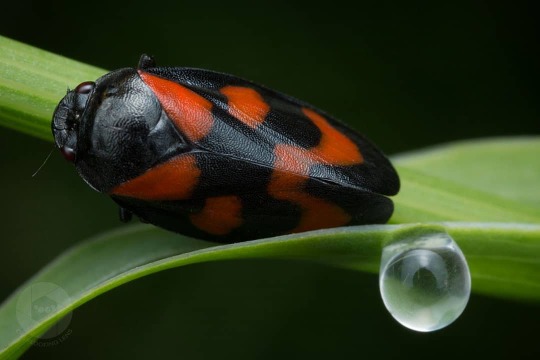
Red & Black Froghopper!⠀⠀⠀⠀⠀⠀⠀⠀⠀⠀⠀⠀ ⠀⠀⠀⠀⠀⠀⠀⠀⠀⠀⠀⠀ These shy little guys can accelerate at 4,000 m/s2 and jump 70 cm vertically! ⠀⠀⠀⠀⠀⠀⠀⠀⠀⠀⠀⠀ ⠀⠀⠀⠀⠀⠀⠀⠀⠀⠀⠀⠀ Follow me for an unforgettable experience through the Alps!⠀⠀⠀⠀⠀⠀⠀⠀⠀⠀⠀⠀ ⠀⠀⠀⠀⠀⠀⠀⠀⠀⠀⠀⠀ Tag a friend who loves nature!⠀⠀⠀⠀⠀⠀⠀⠀⠀⠀⠀⠀ ⠀⠀⠀⠀⠀⠀⠀⠀⠀⠀⠀⠀ Discover Practical Lessons From Nature on our website! Link in Bio 🔝.⠀⠀⠀⠀⠀⠀⠀⠀⠀⠀⠀⠀ ⠀⠀⠀⠀⠀⠀⠀⠀⠀⠀⠀⠀ #arthropod #wildlifephoto #macrophoto #bug #insects #conservation #naturelove #macrophotography#austria #tirol #hiking #mountains #passion_in_macro #raw_insects #macro_highlight #macroclique #insects_of_our_world #kings_macro #insectguru #kings_insects #macro_delight #macroworld_tr #featured_macros #invert_macro #macro_spotlight #macro_perfection #macro_brilliance #macro_vision #macro_kings #arthropod_perfection (at Ehrwald, Tirol, Austria) https://www.instagram.com/p/CCHExM8ATp_/?igshid=1ekrnco81avil
#arthropod#wildlifephoto#macrophoto#bug#insects#conservation#naturelove#macrophotography#austria#tirol#hiking#mountains#passion_in_macro#raw_insects#macro_highlight#macroclique#insects_of_our_world#kings_macro#insectguru#kings_insects#macro_delight#macroworld_tr#featured_macros#invert_macro#macro_spotlight#macro_perfection#macro_brilliance#macro_vision#macro_kings#arthropod_perfection
0 notes
Photo

Red-and-black Froghopper - A red-and-black froghopper sitting on a leaf at Titchmarsh nature reserve, back in June on day 4 of 30 Days Wild. https://flic.kr/p/2jnU4Gt
2 notes
·
View notes
Photo

Red-and-black Froghopper — A Nature Journey Cercopis vulnerata – This bug is hard to miss when coming across it resting on low plants like nettle.
0 notes
Text
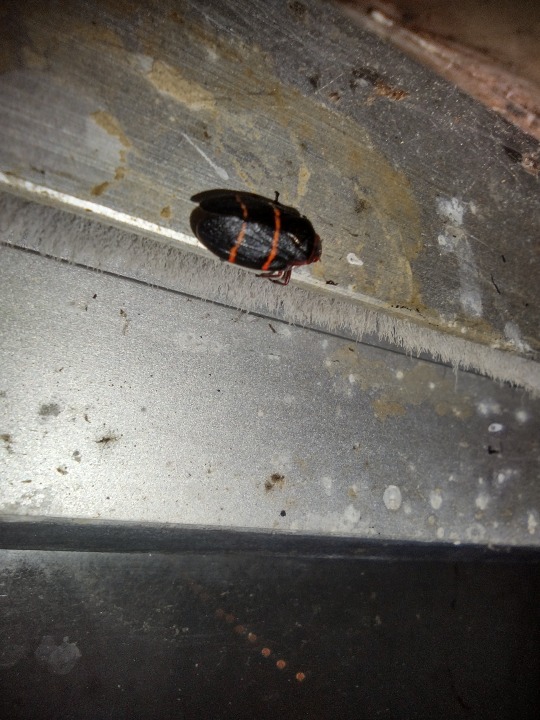
[PHOTO TAKEN: JUNE 9TH, 2024 | Image ID: A photo of a red-striped black froghopper on a metal surface /End ID.]
#Cercopidae#froghopper#spittlebug#true bugs#hemiptera#insects#insect#entomology#bug#bugs#Bugblr#invertebrates#inverts#arthropods#photos#photo#Wasp House Sights
17 notes
·
View notes
Text

Red and Black Froghopper, Cercopis vulnerata Canon 400D EF 100 2.8 f/9 1/80 iso: 200 Srbsko, Czech Republic 5/31/2008
#Hemiptera#bugs#Cercopis#insects#invertebrates#macro#grasslands#pest#insect#macrophotography#insectphotography
3 notes
·
View notes